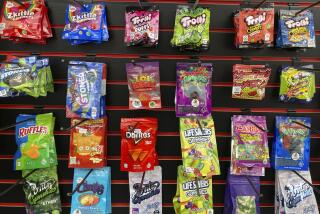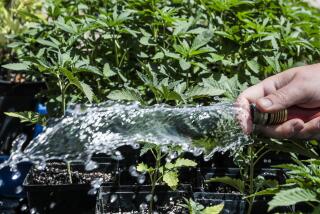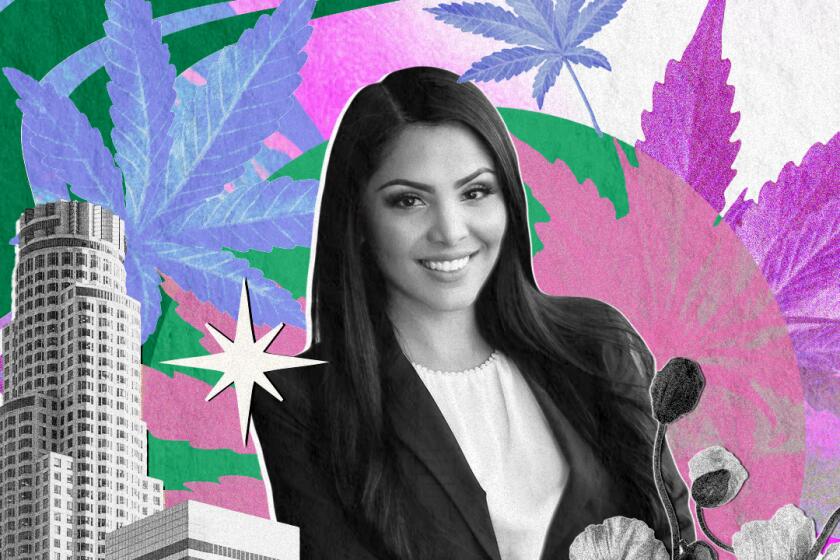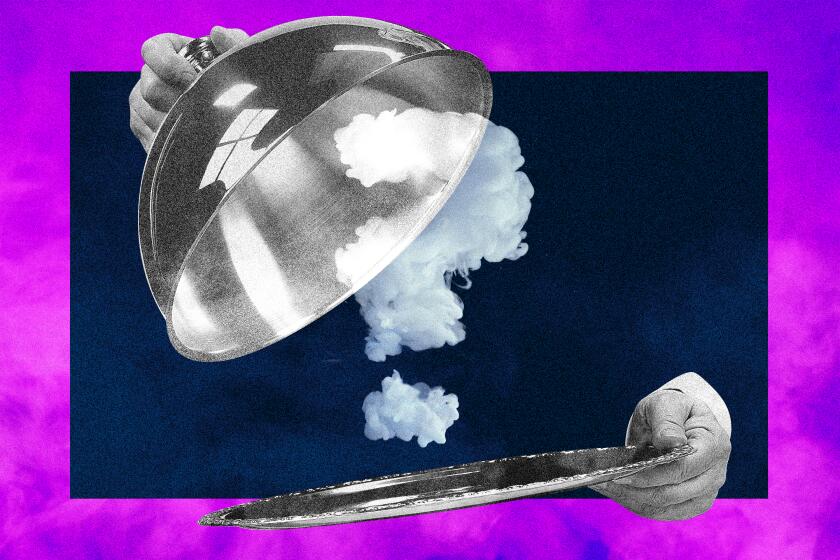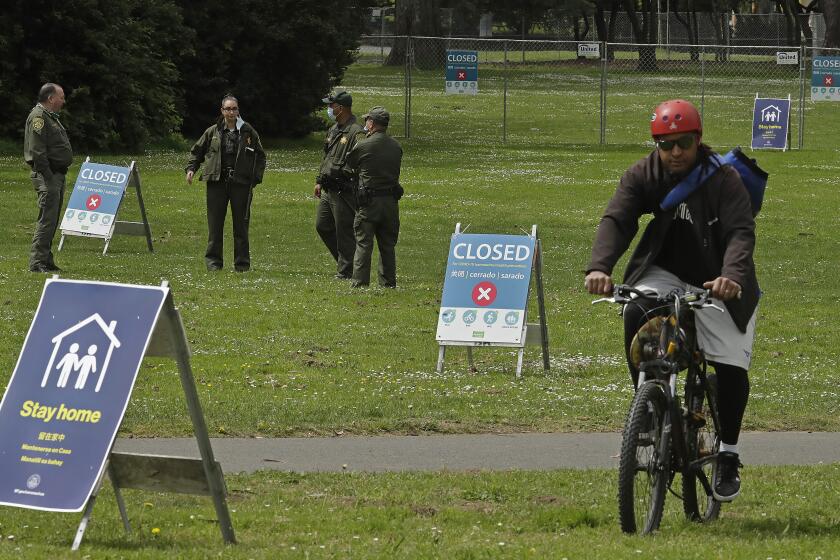Capitol Journal: Why does California’s public health department treat CBD like poison?

U.S. Senate Majority Leader Mitch McConnell — the nation’s second most powerful Republican — and California’s Democratic state legislators completely agree on one thing: Marijuana’s cousin hemp should be fully legalized.
As the late U.S. House Speaker Tip O’Neill famously said: “All politics is local.”
In McConnell’s home state of Kentucky, tobacco farming is dying out. Farmers are desperate for a replacement crop. And hemp is their choice for the future.
In California, farmers also need a new crop that doesn’t use much water. That’s hemp.
“It’s going to be incredibly important for California agriculture,” says state Sen. Scott Wilk (R-Santa Clarita), who represents the Antelope Valley. “A lot of farmers are going to quit what they’re doing and grow hemp.”
But first two bills will need to pass the Legislature and be signed by Gov. Gavin Newsom. It’s a good bet they will. One bill — Wilk’s — deals with cultivation. The other legalizes hemp’s medicinal products.
UCLA’s paranoid stance on cannabis leaves students in the lurch »
Hemp had a “good guy” image for 8,000 years — used starting in ancient Mesopotamia in the making of rope, clothes, paper and in food.
“The sails of the Pinta, the Nina and the Santa Maria were made from hemp, as were the boats’ caulking,” Wilk says, referring to Columbus’ maiden voyage to America. “Thomas Jefferson drafted the Declaration of Independence and Betsy Ross weaved the first flag out of hemp….
“Hemp should be seen as our ‘Back to the Future.’”
Problem is, hemp got mixed up in politicians’ minds with its cannabis cousin marijuana. And in 1937, Congress linked the two in law. Both weeds were banned. Never mind that you can get high off pot, but hemp is non-intoxicating. The linkage was nonsensical.
In his so-called war on drugs, President Nixon in 1970 signed illogical legislation classifying marijuana and hemp as Schedule 1 drugs along with heroin, cocaine and the like.
Gov. Jerry Brown signed a bill in 2013 that permitted the farming of industrial hemp — but only if the federal government allowed it. It didn’t. So the measure was moot until December when McConnell inserted into a farm bill a provision legalizing the farming of industrial hemp. President Trump signed it.
“At a time when farm income is down and growers are struggling, industrial hemp is a bright spot of agriculture’s future,” McConnell tweeted. “The Farm Bill will not only legalize domestic hemp, but it will also allow state departments of agriculture to be responsible for its oversight.”
Wilk’s bill, SB 153, meshes California law with the federal government’s and requires the state agriculture department to submit a hemp cultivation plan to the feds.
Wilk says one Antelope Valley farmer has already planted 100 acres of hemp. “Next year, I expect there’ll be 10,000 acres,” he says.
Israel is banking on cannabis as its next big industry »
Because farmers have over-pumped groundwater in the valley, Wilk says, they’ve lost 50% of their irrigation supply. Alfalfa is historically a big crop, but it’s a huge water gulper, needing seven acre-feet of water per acre. Hemp, however, uses only 2.3 acre-feet per acre.
“So farmers are ready to go with hemp, but California is not yet in compliance with the federal farm act,” the lawmaker says.
Wilk’s bill zipped virtually unnoticed through two Senate committees and across the Senate floor without a “no” vote. It’s now in the Assembly.
The second hemp bill, AB 228, similarly sped through the Assembly under the radar without a “no” vote. It’s currently in the Senate.
AB 228 is complicated by chemistry. It involves CBD, short for cannabidiol, a molecule derived from cannabis. Its cousin is THC, the ingredient in marijuana that gets you high.
Hemp CBD is a non-intoxicant. But its fans say it can alleviate chronic pain, anxiety, seizures and a lot of other ailments, such as arthritis and insomnia. It can be rubbed on the skin as an ointment or digested in food. Old folks love it, says the bill’s author, Assemblywoman Cecilia Aguiar-Curry (D-Winters).
“I went to a seniors’ retirement complex and was telling them about the legislation and everybody started clapping,” Aguiar-Curry says. “People were using it.”
Black market cannabis shops thrive in L.A. even as city cracks down »
It’s being sold in health food stores and sports shops under a cloud. The California Department of Public Health has been yanking products off the shelves, but doesn’t want to talk about it.
This was the response I got from the department after asking why it was treating hemp CBD like some poison:
“State law mandates that the CDPH adopt federal laws and regulations pertaining to food, drugs, cosmetics and medical devices…. CDPH is required to enforce those laws and regulations. CBD derived from hemp is currently not allowed in any of the items CDPH regulates…including conventional foods, drugs and cosmetics.”
But psychoactive CBD from marijuana can be legally sold in pot shops. Makes no sense.
Proposition 64, the 2016 marijuana legalization initiative, is largely to blame. It left healthy hemp out of its act.
AB 228 legalizes hemp CBD, allowing it to be sold in retail stores and licensed marijuana dispensaries.
“My phone has been ringing off the hook in my office — ‘When’s it going to be legal?’” Aguiar-Curry says.
Newsom hasn’t taken a public position. But he has privately encouraged the authors to swiftly pass the legislation.
Meanwhile, the governor should calm down his public health department — maybe sneak officials some hemp CBD.
Follow @LATimesSkelton on Twitter
More to Read
Get the L.A. Times Politics newsletter
Deeply reported insights into legislation, politics and policy from Sacramento, Washington and beyond. In your inbox three times per week.
You may occasionally receive promotional content from the Los Angeles Times.

